
What is better blinds or roller blinds: comparison and choice
Blinds and roller blinds are an alternative to traditional fabric curtains on windows. However, each of these stylish interior accessories has advantages and disadvantages. Our experts have analyzed the properties and features of each type, which will help you make a choice that meets your tastes and preferences.
First of all, you need to know that both blinds and roller blinds are divided into several varieties. Blinds — on horizontal and vertical, and roller blinds — on: solid, such as «zebra», «Roman» and «pleated».
Therefore, we immediately give a table in which we indicate the pros and cons for each type.
|
|
|
|
|
Vertical blinds
|
+ do not fade in the sun;
+ do not collect dust;
+ easy to clean and wash with a vacuum cleaner or a damp sponge;
+ do not emit any toxic substances;
+ easily repaired, for which it is enough to replace one or more damaged lamellas;
+ make it possible to darken the room without obstructing the flow of fresh air entering through the windows;
|
— to open windows, you have to completely move the blinds to the side;
— close the window sill;
— the impossibility of washing, after which the lamellas lose their shape.
|
|
Horizontal blinds
|
+ resistant to changes in temperature and humidity, do not lose their original shape;
+ covered with enamel resistant to solar radiation, do not lose their original color;
+ do not close the window sill, which can be used as a «useful area»;
+ the ability to use as an additional to other types of curtains or vertical blinds;
+ since the slats rotate 360 degrees, they allow a wider adjustment of lighting.
|
— they are «dust collectors», dust is quickly collected on horizontal slats, cleaning and washing are difficult;
— make noise with open windows under the influence of a draft;
— not repairable — if at least one of the thin lamellas is damaged, the entire system has to be replaced.
|
|
Solid roller blinds
|
+ able to completely darken the room;
+ fabrics are environmentally friendly, are dyed with resistant colors that do not fade under solar radiation, are additionally impregnated with dust-repellent compounds;
+ differ in a wide variety of colors and design patterns;
+ can be used in combination with conventional fabric curtains or vertical blinds.
|
— the possibility of sticking and getting wet, in case of condensation on window panes;
— cleaning is possible only in a dry way with a vacuum cleaner or brush;
— inability to use on windows with sliding shutters.
|
|
zebra type
|
+ the ability to view the street with the curtains down;
+ wide possibility of adjusting the lighting of the premises;
+ creating a more interesting, original interior.
|
— the inability to 100% darken the room;
— the price, twice higher, than at continuous curtains.
|
|
Type «Roman»
|
+ easy to assemble, folding in strips;
+ require much less material in the manufacture than solid curtains, which means it is cheaper;
+ can be mounted in different versions both on frames and on ceilings and walls;
+ can be washed without losing their original properties.
|
— easily collect dust, so they require regular cleaning or washing;
— equipped with complex fastening structures.
|
|
Pleated type
|
+ can be installed on skylights and skylights;
+ equipped with a variety of control systems for each specific case — on laces, chains or springs;
+ variety of installation configurations — with 1-2-4 cornices.
|
— during installation, the help of a specialist is required, as they have a very wide range of products.
|
Vertical blinds
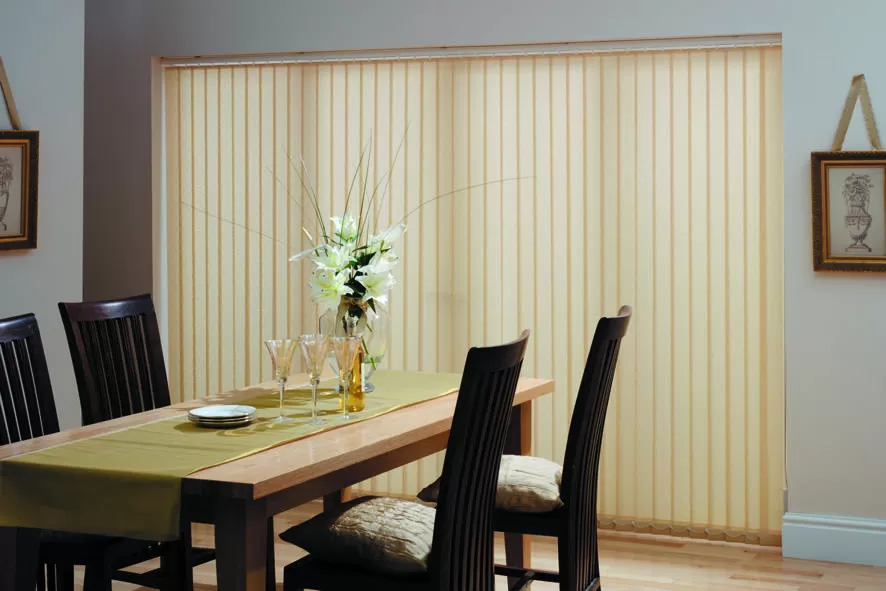
They are a structure of vertical strips — lamellas suspended on a horizontal bar and connected from below by chains. Vertical blinds can be installed in different positions relative to the window: in the opening, on the wall above the opening, on the ceiling, including hanging. The slats are made from different materials: fabric, impregnated and dyed in a special way; plastic; aluminum; perforated thin metal; from thin strips of fabric — filament, in design — curly, with photo printing, in the form of an arch, multi-impressive, etc. Vertical blinds can be operated both manually and by means of a mechanism with a remote control.
Horizontal blinds

A structure made up of horizontal slats — lamellas, connected on both sides with cords, with the help of which the blinds are assembled. In wide blinds, the cord can also be passed in the middle. Lamellas can be made of thin aluminum, plastic, wood, such as bamboo. Horizontal blinds can be installed in different versions: directly on the window frame from the inside, outside the window, between the frames. You can install horizontal blinds in the desired position either manually or using a remote-controlled mechanism.
Roller blinds solid
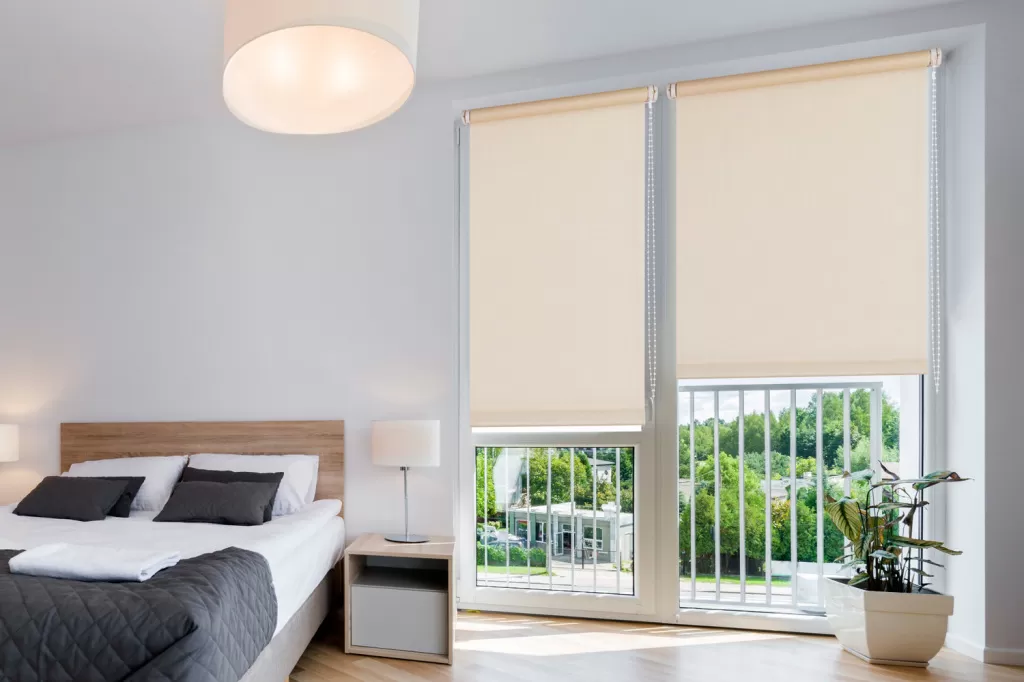
Solid roller blinds are a kind of window curtains in the form of a woven fabric, wound when assembled on the shaft of the control mechanism, on which it is suspended. In most cases, such curtains are installed on the wall above the window opening or on the ceiling, but there are options when you can mount them directly on the window frame or in the window opening. Positioning can also be done manually or with a motorized mechanism and remote control. Manufacturers offer roller blinds in a huge range of types of fabrics, colors and shades, light transmission, positioning and control types.
One of the features of roller blinds is their versatility. That is, they can be installed in rooms of any functional purpose — living rooms, kitchens, bathrooms, etc. If necessary in accordance with interior design solutions, they are easily combined with traditional curtains and drapes.
Zebra curtains
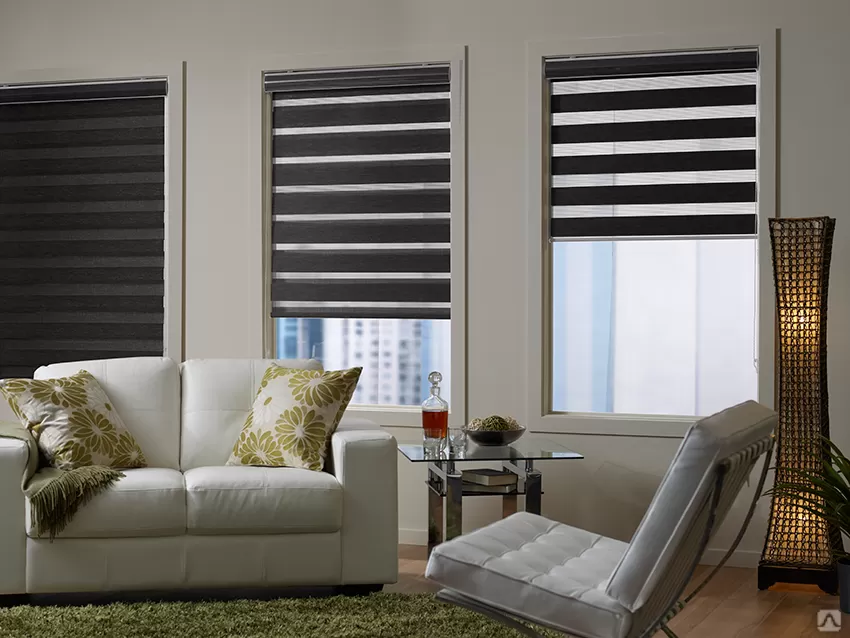
Roller curtains of the «zebra» type differ from solid curtains in that their canvas consists of alternating strips — opaque and transparent. At the same time, fabrics can also differ in a wide variety of colors and patterns. Installation methods and control mechanisms are similar to those of solid roller blinds.
Roman curtains
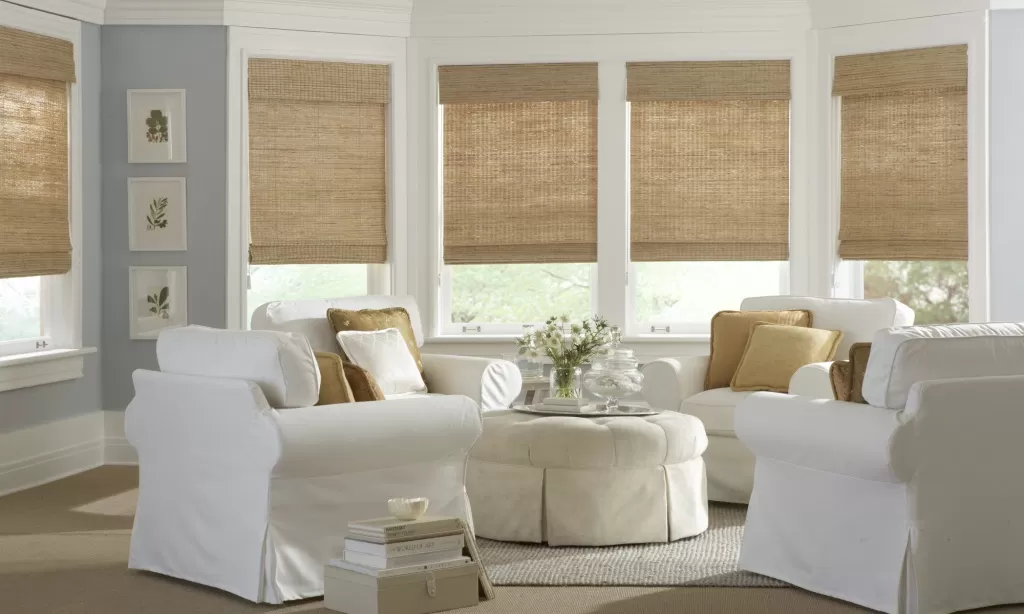
Roman curtains differ from ordinary solid curtains in that they form even folds when raised, resembling a pelmet. If they are fully expanded, they also do not form a flat surface and consist of a series of small folds following one after another. The design of the rolling mechanism is similar to conventional solid curtains, the control is carried out manually or using an electronic device.
Pleated curtains
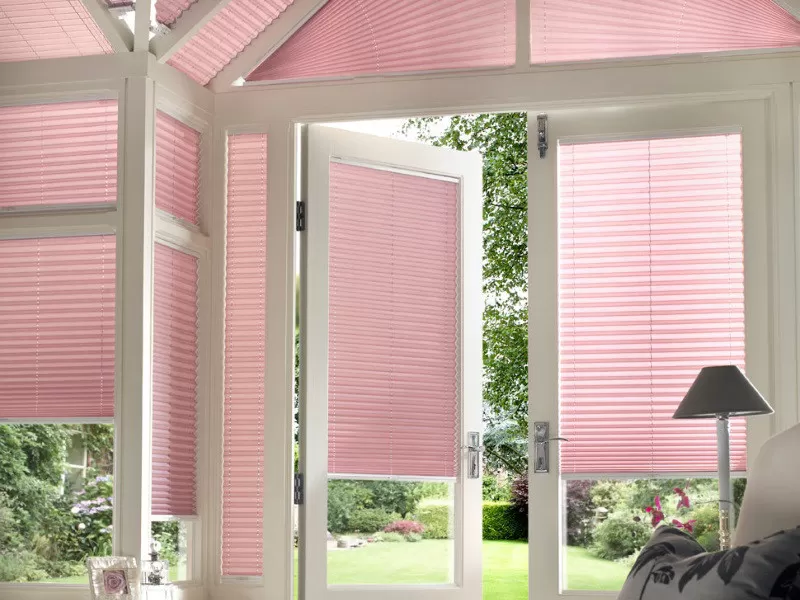
Curtains of the «pleated» type in appearance resemble horizontal blinds, but differ from them in that they are made of solid fabric, which is assembled in the form of an «accordion». They can be installed on the window frame or on the wall above the window opening, controlled manually or by means of an electrically driven mechanism.
Добавить комментарий
Для отправки комментария вам необходимо авторизоваться.